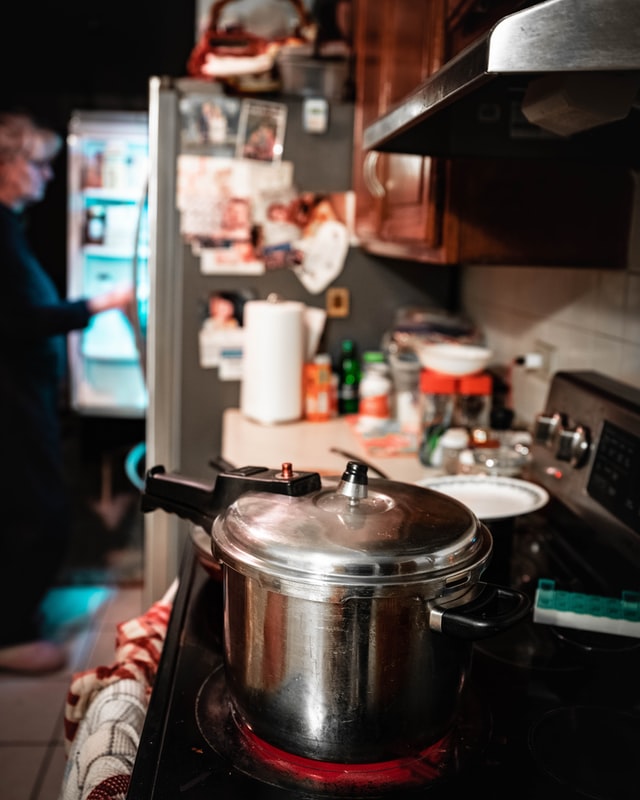
How To Convert Recipes For A Pressure Cooker
It's time for another pressure cooker blog! I hope everyone has had a chance to use their pressure cooker as it heated up in Colorado the past few weeks. Your pressure cooker is not only a way to making cooking quick and easy, but a great way to keep your kitchen cool - no oven or stove top needed.
This week we're going to talk about something fun - how to convert recipes for your pressure cooker. We not only teach a class on this topic, we do it at home all the time. I love the challenge of taking a favorite recipe and figuring out how to get it just right in the pressure cooker. In fact, I took one of my family favorite recipes, Chicken Orobianco, and gave it a pressure cooker refresh and it is delish!
There are a couple of things that you need to understand about your pressure cooker before you get started:
1. Liquid does not evaporate in a pressure cooker. In our beautiful, dry state we're very used to quick evaporation. However, inside your pressure cooker all of the liquid stays right where you put it.
2. All ingredients do not cook at the same rate. Make sure you know how each of the ingredients in your recipe cook in a pressure cooker first. You won't be able to make a pot roast with carrots and potatoes by throwing it all in at the same time.
3. Use the saute and/or brown setting. You are able to not only saute, but your pressure cooker is capable of giving meat a delicious sear. By using these functions you can get the same depth of flavor that you can get on the stove top or in the oven.
4. Instant Pot is not a stand alone product. It is an electric multi-cooker (pressure cooker) and is a brand, not its own product. Similar to calling tissue Kleenex or a food processor a Cuisinart. It is not the only one on the market and you do have multiple options.
5. Knowing that most of the recipes online are geared towards Instant Pot, learn how to convert the functions/buttons. For example: On Instant Pot you have a single Saute function that works as saute and browning, with the options of Saute Low/Saute Normal/Saute High. Saute high is the brown function on Instant Pot. On a Fagor/Zavor or Cuisinart you have separate Saute and Brown functions. Instant Pot starts the pressure cooking cycle automatically, where on other brands you sometimes need to hit start to begin the cycle.
Ok, so let's talk recipes. How do you even begin? Here are a few tips to get you started:
· Reduce the amount of liquid. No, I cannot give you a perfect formula. However, you need a minimum of 1 cup of liquid to safely cook in your pressure cooker. One other thing to keep in mind: Your food will also release liquid into your recipe that will not evaporate. Chicken, for example, will release A LOT of liquid when cooking. More so if you use bone-in chicken. So keep that in mind and make sure to reduce your liquid.
· Don't just dump all of the ingredients in and hope for the best. Take some time to sit down and think about how the ingredients cook. Let's go back to the pot roast concept. You'll need to brown your roast first, to start building that flavor. And the meat itself needs about 45 minutes in the pressure cooker. But your potatoes and your carrots take about 5 minutes. To remedy this, place your roast and liquid into the pressure cooker after browning, and cook on high pressure for 40 minutes. Let pressure release, then add carrots and potatoes. Place back under pressure for 5 minutes. You CAN add ingredients in stages. In fact, to convert a recipe you'll have to do this in many cases.
· Don't use quick release. Try to always use natural release unless you are doing delicate items like fish or vegetables. Natural release is akin to the resting phase for meat. It lets your food absorb the moisture and keeps it tender. Think of it like this: if you quick release with meat dishes it will quickly pull out all of the pressurized air, including that in the meat, like a vacuum. So if you can, always try to natural release.
· When using pasta, use heartier, hefty pastas like penne, gemelli (my favorite), cavatappi, etc. Many online recipes will suggest long pastas like spaghetti or linguine. Don't fall into this trap. First you have to break them in order for the pasta to get under the liquid. Second, it overcooks quickly. If you use a heartier pasta it is less likely that it will overcook and go to mush and you can also just stir it into the liquid.
Here are a couple of my favorite recipes that I have converted over the years. I hope you enjoy them and that they help you start to convert recipes on your own!
